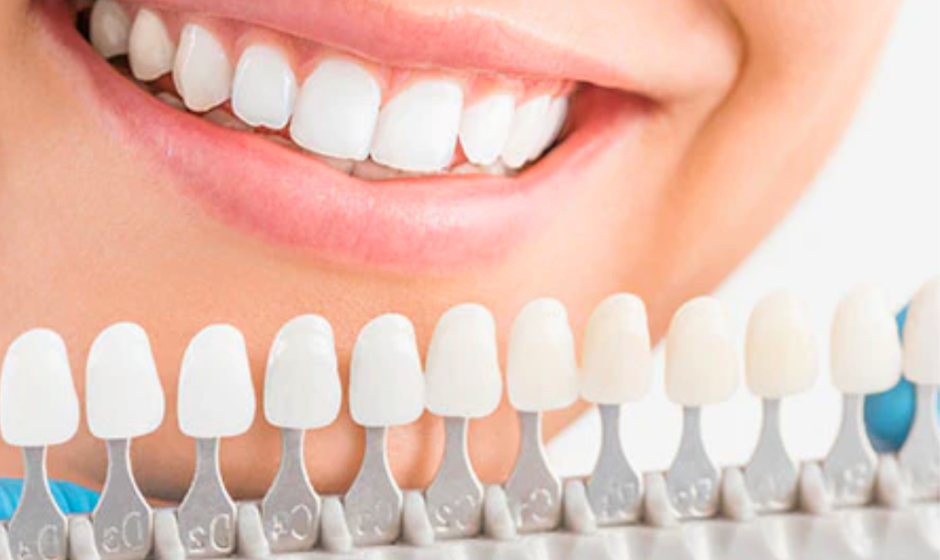Veneers can transform your smile, fixing imperfections like chips, stains, or misalignments. But how much do they cost? And will your insurance cover them? Here’s what you need to know.
What Are Veneers?
Veneers are thin shells attached to the front of your teeth. They can enhance the appearance of your smile by covering imperfections. Types of veneers include:
- Porcelain Veneers: Durable and natural-looking. These often require removing some enamel from your teeth
- Composite Resin Veneers: Made from a resin material, these can be applied directly to your teeth. They’re often easier to replace and may require less enamel removal
- Lumineers: A type of porcelain veneer that is thinner and often doesn’t require enamel removal
- Palatal Veneers: Customized appliances for the back of your teeth, protecting your gums and improving your bite
- Temporary Veneers: Snap-on veneers that don’t require enamel removal but may be less comfortable
How Much Do Veneers Cost with Insurance?
On average, the cost of veneers per tooth with dental insurance is around $1,000. The final price depends on the type of veneers you choose. Porcelain veneers, which are generally more expensive, can cost between $800 and $1,312 per tooth. Without insurance, they typically cost around $1,500 per tooth. However, your actual costs may vary based on your location and the specifics of your dental plan.
Furthermore, the costs for veneers can vary based on several factors. Here’s a breakdown:
Type of Veneer |
Average Cost |
Cost Range |
| Single Composite (Lab) | $1,000 | $800 – $1312 |
| Single Composite (Office) | $872 | $500 – $1,500 |
| Single Porcelain | $1,765 | $500 – $2,895 |
| Single Porcelain | $1,817 | $975 – $2,650 |
| Full Set Porcelain (6-8) | $15,486 | $5,700 – $24,500 |
Regional Differences: Costs can vary by location. For instance, veneers may cost more in states like Alaska or Washington, D.C., compared to places like Connecticut or Florida.
To make the article more comprehensive and informative, consider adding these additional headings and related information:
What Are Dental Veneers?
Dental veneers are thin, custom-made shells that cover the front surface of teeth to improve their appearance. Veneers can correct various issues, such as discoloration, chips, and minor misalignments.
Why Doesn’t Insurance Typically Cover Veneers?
Most dental insurance plans classify veneers as a cosmetic procedure, which is why they are usually not covered. Cosmetic treatments are considered elective, meaning they’re not necessary for oral health, and dental insurance typically only covers procedures needed for health reasons, such as fillings, crowns, or root canals.
What Are the Different Types of Veneers?
Veneers come in two main types:
- Porcelain Veneers: Known for their durability and natural look, porcelain veneers are more expensive but long-lasting.
- Composite Veneers: These are less expensive and can be applied in one visit but are less durable than porcelain.
How Long Do Veneers Last?
Porcelain veneers generally last between 10 to 15 years, while composite veneers may last up to 7 years. The lifespan of your veneers depends on factors such as dental hygiene, wear and tear, and regular dental check-ups.
Are There Alternatives to Veneers?
If you’re looking for a less expensive option than veneers, consider:
- Teeth Whitening: Effective for improving discoloration at a lower cost.
- Dental Bonding: A more affordable option that can fix minor chips and cracks.
- Orthodontics: For misaligned teeth, braces or clear aligners may be better options for long-term solutions.
How to Care for Veneers
Proper care for veneers is essential to ensure their longevity. Here are some tips:
- Brush and floss regularly to maintain good oral hygiene.
- Avoid biting into hard objects like ice or nuts, which can damage the veneers.
- Visit your dentist regularly for cleanings and check-ups to monitor the condition of your veneers.
Are There Any Risks Associated with Veneers?
Veneers are generally safe, but they do come with some potential risks:
- Tooth Sensitivity: After placing veneers, you may experience increased sensitivity to hot or cold foods and drinks.
- Irreversibility: Once the procedure is done, it’s permanent, as a layer of enamel is removed from the natural tooth.
Will Insurance Cover Veneers?
Insurance coverage for veneers is often limited. Most dental insurance plans view veneers as a cosmetic procedure. However, there are exceptions. If veneers are used for restorative purposes or if your insurance plan includes cosmetic coverage, you might receive partial reimbursement.
Things to Consider:
- Check Your Policy: Some insurance plans offer add-on coverage for cosmetic procedures
- In-Network vs. Out-of-Network: Insurance often covers more if you choose an in-network dentist
- Out-of-Pocket Costs: Be aware of deductibles and co-pays, which can affect your total expense
How to Manage Costs
Affording veneers can be challenging. Here are some tips to manage the expense:
- Consult Multiple Dentists: Prices can vary. Consult several cosmetic dentists to find the best price.
- In-House Financing: Some dental offices offer financing plans to help manage the cost.
- Use CareCredit: This credit card is designed for health and cosmetic procedures and can be used for veneers.
The Process of Getting Veneers
The procedure for veneers typically involves:
- Consultation: Discuss your goals and get an examination.
- Preparation: Enamel may be removed, and molds are taken for custom veneers.
- Placement: Veneers are fitted and bonded to your teeth.
Potential Risks and Aftercare
Veneers can be a great way to improve your smile, but there are some risks:
- Sensitivity: Removing enamel can lead to sensitivity to hot and cold.
- Irreversibility: Once enamel is removed, it cannot be restored.
Aftercare Tips:
- Avoid hard foods and very hot or cold items initially.
- Maintain good dental hygiene and regular check-ups.
Final Thoughts
Veneers can be a valuable investment in your smile. Understanding the costs and insurance coverage can help you make an informed decision. Consult with a cosmetic dentist to explore your options and find a payment plan that fits your budget.
FAQs about Veneers
Why Doesn’t Insurance Cover Veneers?
Insurance typically doesn’t cover veneers because they are often considered a cosmetic procedure. Insurance plans usually focus on essential treatments and preventive care, and veneers are generally seen as enhancements rather than necessities. However, if veneers are required for restorative reasons (such as after trauma), some insurance plans might offer partial coverage. Always check with your insurance provider for details specific to your plan.
How Much Is a Full Top Set of Veneers?
The cost of a full top set of veneers (usually 6-8 veneers) varies widely depending on the material and your location. On average, a full set of porcelain veneers can cost between $5,700 and $24,500. The price can vary based on factors such as the dentist’s experience, the complexity of the case, and regional cost differences.
What Is Cheaper Than Veneers?
If veneers are too expensive, there are several alternatives that might be cheaper:
- Bonding: Tooth-colored resin applied to cover imperfections, typically costing between $100 and $400 per tooth.
- Teeth Whitening: For stains, professional whitening can range from $300 to $1,000 and is generally less costly than veneers.
- Orthodontics: If misalignment is the issue, braces or clear aligners may be a more affordable long-term solution.
How Long Do Veneers Last?
Veneers generally last between 10 to 15 years with proper care. The longevity depends on factors like the type of veneer, your oral hygiene, and lifestyle habits. Porcelain veneers tend to be more durable than composite resin veneers. Regular dental check-ups and maintaining good oral hygiene can help extend the lifespan of your veneers.




